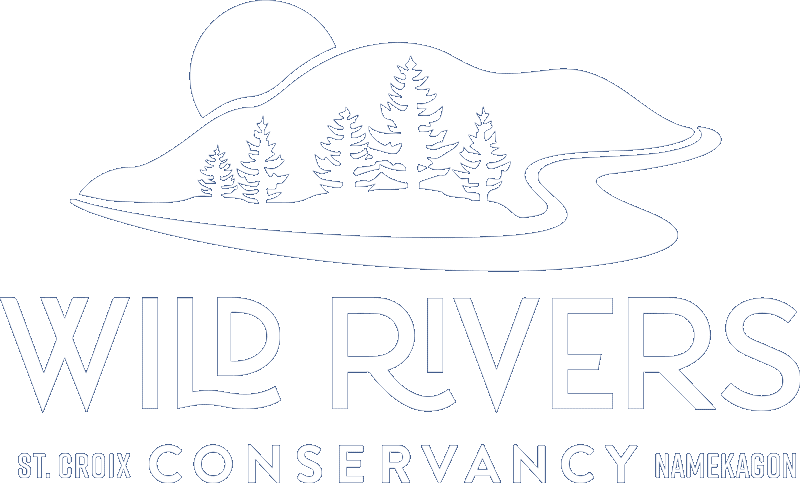What do you think of when you hear the word ‘oak’? For me, the name is synonymous with a sense of security—every house I have lived in has had an oak nearby, and so I associate them with feeling at home. Each autumn, the sound of acorns plinking down the eaves is a reminder of the abundance these trees bring to the surrounding ecosystem.
Oaks form an important part of our ecosystem and economy. They provide habitat and food for wildlife, and wood that can be used for a variety of purposes, including furniture, making barrels, and heating. Large oaks can increase the value of one’s property in addition to providing beauty and shade. But sadly, oaks are in need of a helping hand. High deer populations, diseases and pests, and other factors lead to poor oak regeneration.
On July 15, the Wild Rivers Conservancy hosted the second Woodland Owner Webinar, titled “Protecting Our Oaks.” Organized by Nikki Henger, Wild Rivers Conservancy’s Forestry Program Coordinator, the webinar featured presentations by John Geissler, Saint John’s Abbey Arboretum Land Manager and Outdoor University Director, and Paul Cigan, Forest Health Specialist for Northwest Wisconsin for the Wisconsin Department of Natural Resources (DNR). Attendees had the opportunity to learn practical steps and actions that can be taken to protect oaks from deer, understory competition, and oak wilt.
For John Geissler and his team at the Saint John’s Abbey Arboretum, oak management has been a challenge due to high densities of deer and understory competition. The 3,000 acres owned and managed by Saint John’s Abbey Arboretum lie on the glacial moraine of Avon Hills in Stearns County, Minnesota. Most of the oaks on the property of Saint John’s are between 120-150 years old. But diversity of age and species is integral to a healthy woodland.
Geissler described the first efforts to gather acorns on the property to grow. Unfortunately, the deer treated the seedlings like a salad bar. So, a new effort was made to put protective measures in place to deter deer. Plastic tubes around the trees and exclosures ranging in size from a half acre to 20 acres were implemented. Geissler and his team found that exclosures the size of four acres worked best, and weeding by hand along with putting mats around the oaks to suppress undergrowth in their immediate vicinity gave them a fighting chance. These efforts along with other management techniques mentioned in the webinar seem to be finding success as evidenced by the growth of the young oaks, and Geissler’s insights offer valuable information to woodland owners facing these challenges.
For Paul Cigan and the Wisconsin DNR, oak wilt is of great concern in northwest Wisconsin. Oak wilt is a fungal pathogen that may have been here as early as the 1890s and targets oaks. It is believed to have been introduced and thus exotic in origin, and since trees can’t defend themselves against it, it causes mortality for red oaks and some white oaks. Once a red oak is infected, it takes just 4-6 weeks for it to die.
Cigan also explained why oak wilt is so deadly. Spores travel through the vascular system of the tree, clogging water-conducting tissues and eventually forming a spore mat on the sapwood that pushes out the bark and emits a fruity odor. This odor is a proverbial dinner bell for sap beetles, who flock to the diseased tree. The tree, meanwhile, begins to lose leaves from the crown downwards in an effort to conserve energy and water, which is why two of the early symptoms of oak wilt are a heavy, fast leaf drop and leaf bronzing from June through September.
Spread of oak wilt occurs when the sap beetles move on from the infected tree to a newly injured oak and bring the oak wilt spores with them, which is why it is important to not move firewood far. Spores can also travel belowground through the network of roots. The disease can persist in an infected root system for up to four years, making oak wilt a formidable enemy for woodland owners.
Cigan shares a number of oak wilt symptoms and some lookalikes, as well as a list of recommendations for what woodland owners can do to help combat the spread of oak wilt. (The webinar was aptly timed, as one recommendation was to avoid cutting or pruning oaks between April 15 and July 15!)
It’s worth noting that oak wilt is still progressing to the north. Awareness and prevention efforts are essential, and the resources provided by this webinar give woodland owners the tools and advice needed to protect their oaks.
